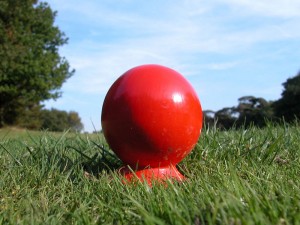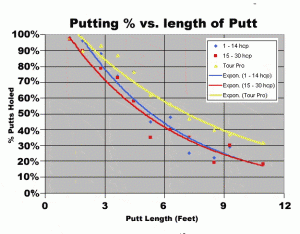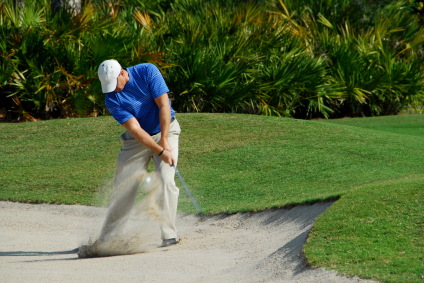Green speed is a major factor in putting. No wonder turf managers and golf architects spend a lot of time focused on the putting surface to make the conditions perfect for golfing. There are a lot of ingredients behind a good green – smoothness, firmness, and uniformity, to name few.
The device that measures green speedsis called a stimpmeter. Basically, it measures the distance a golf ball rolls (in feet) from applying a known force. (a.k.a BRD – Ball Roll Distance). It looks like a little roller coaster – put the ball at the top, and see how far it rolls across the green.

“Stimpmeter” is named after its inventor, Edward Stimpson. Stimpson invented it in 1935, after watching golfers who were flummoxed by the speed of the greens during the 1935 U.S. Open at Oakmont Country Club. The device wasn’t used in an official way by the USGA until 1976
Here is a table that USGA uses to classify the green speed on a course.
| Category | Membership Play | Championship Play |
|---|---|---|
| Fast | 8′ 6″ | 10′ 6″ |
| Medium Fast | 7′ 6″ | 9′ 6″ |
| Medium | 6′ 6″ | 8′ 6″ |
| Medium Slow | 5′ 6″ | 7′ 6″ |
| Slow | 4′ 6″ | 6′ 6″ |
Green Speed Chart – USGA
While fun to play, speedy greens can be pretty devastating. A perfect example is the greens at Oakmont Country Club, where the Stimpmeter was originally invented. With stimpmeter readings consistently around 14-15 feet, no wonder the winning score was 5 above par at the 2007 Open.
To see how truly fast greens can impact your putting, watch this crazy 3-foot putt (or click here to view) below.
So, what type of green you prefer?





 I remember reading somewhere that the average golfer effectively lowers his or her handicap a full 3 strokes by taking unwarranted gimmes.
I remember reading somewhere that the average golfer effectively lowers his or her handicap a full 3 strokes by taking unwarranted gimmes.